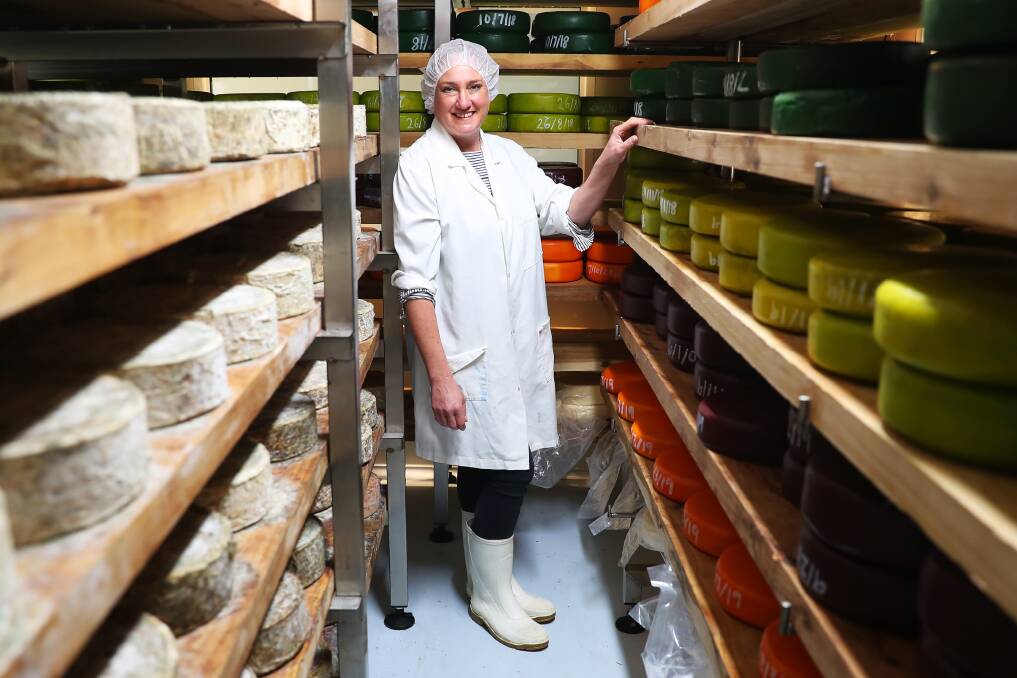Opening the Tricks of Artisanal Cheese Making: A Detailed Do It Yourself Guide
In the world of culinary craftsmanship, artisanal cheese making stands as a testimony to the delicate equilibrium between tradition and advancement. Each action in the procedure, from choosing the ideal milk to improving aging techniques, holds within it a wealth of expertise passed down through generations. As we embark on this journey to demystify the art of developing charming cheeses, we are confronted with a tapestry of abilities and secrets waiting to be unwinded. Join us as we check out the complexities of this old craft, where scientific research, art, and patience merge to generate flavors that entice the detects.
Selecting the Right Milk
When starting the trip of artisanal cheese making, the choice of milk plays a vital function in determining the high quality and features of the end product. The kind of milk selected impacts the flavor, structure, and on the whole profile of the cheese. Raw milk, straight from the animal, is liked by several artisanal cheesemakers because of its unique blend of enzymes, bacteria, and taste substances. Nevertheless, making use of raw milk includes regulations and risks, making sterilized milk a much safer option for newbies.
When choosing milk for cheese making, it is vital to take into consideration the fat material. Greater fat content in milk can lead to a creamier and richer cheese, while lower fat material may result in a drier and firmer texture. In addition, the source of the milk, whether from cows, goats, sheep, or buffalo, adds distinct flavors and attributes to the cheese (Floridia Cheese Melbourne). Each type of milk brings its very own nuances, enabling for a wide variety of cheese ranges to be crafted based upon the picked milk. Ultimately, the option of milk is a basic decision that sets the foundation for a successful artisanal cheese-making venture.
Culturing and Coagulating
To initiate the cheese-making procedure, the important actions of culturing and coagulating need to be carefully executed to change milk into curds and whey. Culturing involves presenting advantageous germs to the milk, which after that starts the fermentation procedure. These bacteria convert lactose (milk sugar) right into lactic acid, producing the acidic environment required for coagulation. The kind of society used can considerably impact the flavor, structure, and ripening of the last cheese product.

The timing and temperature control during culturing and coagulation are crucial elements that influence the last outcome of celebrity. Appropriate implementation of these steps is important to ensure the desired appearance, taste, and consistency of the artisanal cheese being generated.
Draining Pipes and Pushing Curds
After the milk proteins have actually coagulated and the curds have been reduced to release whey, the next crucial action in artisanal cheese making includes draining and pushing the curds to attain the preferred structure and uniformity of the last cheese item. Draining is the process of dividing the curds from the whey. This can be done by moving the curds into a cheesecloth-lined visit this website colander or mold and mildew and enabling the whey to drain off naturally. The time for draining can differ relying on the sort of cheese being made and the desired dampness material.
Pressing helps eliminate any type of remaining whey and compacts the curds to develop a strong cheese wheel. Proper pressing and draining pipes are essential steps that dramatically affect the top quality and qualities of the artisanal cheese being created.
Aging and Flavoring Methods
Implementing precise aging and flavor strategies is critical in boosting the deepness and complexity of artisanal cheeses, elevating their taste profiles to beautiful levels of refinement and class. Aging plays a vital function in establishing the one-of-a-kind flavors and textures that differentiate artisanal cheeses. During the aging procedure, cheeses are saved in carefully regulated atmospheres where factors such as humidity, air flow, and temperature level are adjusted to motivate the growth of helpful molds and germs. This controlled atmosphere enables celebrity to grow slowly, developing complicated scents and abundant tastes.
Seasoning strategies likewise contribute significantly to the last preference of artisanal cheeses. Cheesemakers might choose to introduce extra flavors by incorporating active ingredients such as natural herbs, seasonings, or perhaps fruits into celebrity throughout the production procedure. Additionally, some cheeses are washed or massaged with various liquids, such as salt water or alcohol, to boost their appearances and flavors.
Wrapping and Storing Cheeses

Final Thought
In final thought, understanding the art of artisanal cheese making involves meticulously selecting the ideal milk, adhering to specific culturing and coagulating processes, draining pipes and pushing curds properly, and utilizing different aging and flavoring techniques. Keep in mind to wrap and save your cheeses appropriately to make certain ideal flavor and appearance growth.
Each type of milk brings its own subtleties, allowing for a large variety of cheese selections to be crafted based on the chosen milk.After the milk proteins have coagulated and the curds have actually been reduced to launch whey, the next critical action in artisanal cheese making involves draining pipes and pressing the curds to achieve the preferred texture and uniformity of the final cheese product. A lot of cheeses should be covered in wax paper or cheese paper to permit them to take a breath while protecting them from drying out. For cheeses that need to continue aging, such as bloomy peels or washed rinds, guarantee they are stored in a trendy atmosphere like a cheese cavern or a refrigerator set to the ideal temperature. By paying focus to the covering and storage of artisanal cheeses, cheese manufacturers and lovers can protect the stability of these delicacies and completely enjoy their complicated flavors.